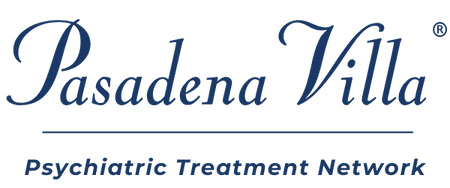Art is a powerful thing; it is creative, it is calming, it is a powerful therapeutic tool. The growing movement towards holistic treatment has supported the view that expressive arts in treatment are valuable for health and wellness. The Journal of Clinical Psychology notes that “art therapy complements the biomedical view by focusing on not only sickness and symptoms themselves but the holistic nature of the person.”
This type of creative therapy uses drawing, painting, collage, coloring, and sculpting to aid individuals in expressing themselves creatively, and allows an art therapist to examine the emotional undertones seen in their work. Many people worry that they are not able to do art therapy due to lack of creativity, but since it is about the process and not the finished piece, art therapy does not require artistic skills, there is no right or wrong, no good or bad. Once an art therapist has a better understanding of an individual’s feelings and behaviors seen through their creation, it allows them to move forward in resolving deeper issues.
Art therapy can reduce pain, anxiety, and tension, as well as enhance the emotional, spiritual, cognitive, and physical well-being. It is often used to improve the symptoms of anxiety, depression, and trauma. Research using neuroimaging scans suggest that the part of the left side of the brain, associated with speech and language, can shut down when a person tries to remember a traumatic event. Traumatic memories activate the part of the right side of the brain which controls autonomic and emotional arousal. Art therapy bypasses the left side and stimulates the traumatic memory on the right side, as the individual processes their artwork, the speech area of the brain reactivates thereby reintegrating the right and left sides of the brain to promote healthy brain functioning.
According to the American Art Therapy Association, art therapy helps a therapist understand how color, texture, and various art media plays into the therapeutic process to reveal one’s thoughts, feelings, and psychological disposition. It can be used as a stand-alone therapy or in combination with other forms of therapy. Registered art therapists have added training beyond their professional licensure and are skilled at guiding even the most art-timid individual through self-discovery using mediums such as clay, painting, mask making or a collage.
Eva Miller, Art Therapist at Pasadena Villa Outpatient Center-Raleigh, says, “What I like about expressive art therapy is that it works from the right side of the brain accessing thoughts and feelings in a different way to promote healing especially related to trauma.”
Advocacy efforts for art therapy are ongoing in 28 states. In 2017, with eight states introduced legislation, and three bills signed into law that including ones for licensing and title protection for credentialed professionals. The legislation, such as the Maryland House Bill 298, provides private insurance reimbursement for art therapy on an equal basis with other licensed mental health professions.
Art therapy supports personal and relational treatment goals for clients. It can improve the cognitive and sensory-motor functions, foster self-esteem, and self-awareness, and reduce and resolve conflicts and distress. Engaging the mind, body, and spirit, art therapy gives clients a voice to experience and empower them as they make an individual transformation.
At Pasadena Villa Outpatient Center, we have seen clients who have struggled to express their thoughts and feelings traditional therapeutic sessions, such as talk therapy. However, our expressive art therapy group appears to “unlock the door” and offer the freedom to communicate differently. More research studies are offering evidence that art therapy helps those struggling with depression, anxiety, and trauma by learning new tools, increasing insight, building confidence and improving social interactions.
Expressing your emotions is an important part of your mental health. If you or a loved one have questions regarding a mental illness, seek guidance from a mental health provider that is right for you. You do not have to face this challenge alone, Pasadena Villa Outpatient – Raleigh can help. Call us at 407-215-2519 or complete our contact form to help with the next steps of treatment.

